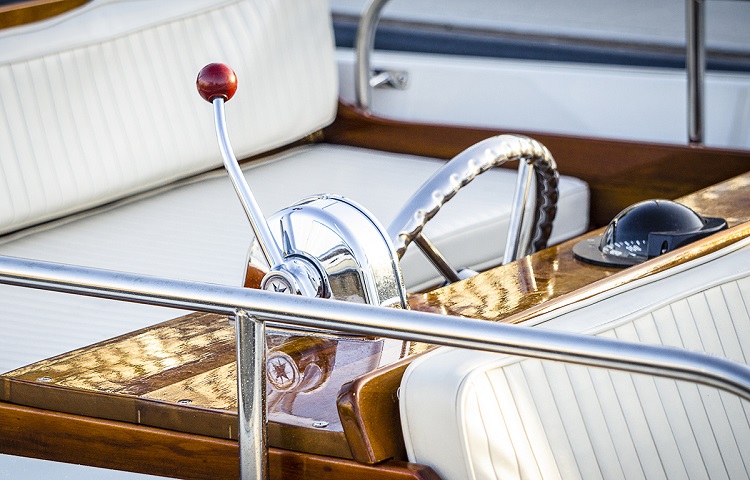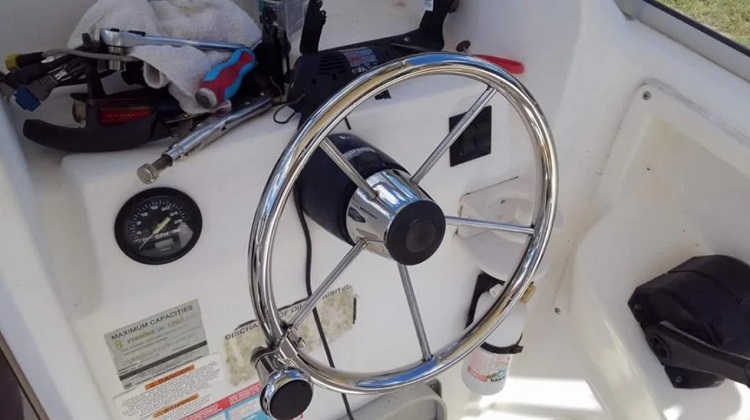Seasoned recreational boat owners are only too familiar with the differences between modern, low-maintenance hydraulic steering systems, and quirky-natured, cable-actuated systems. And if you’re a first-time boat owner who’s never experienced the convenience of hydraulic steering, or you’ve just had your boat repowered, then you need to understand that the differences are as vivid as night and day.
Hydraulic steering does more than just give you safer, more predictable control over your boat. By effectively eliminating problem-prone cables, gearboxes, and friction-inducing hardware that mechanical steering systems require, you’re able to cut your maintenance schedules and costs in half while simultaneously improving your steering reliability. That not only makes converting to a hydraulic system one of the most popular upgrades you can perform on your boat but also one of the best investments you can make in its trade-in or resale value.
Give Your Boat a Performance Advantage With a Hydraulic Steering Conversion

source: boataccessoriesaustralia.com.au
Let’s be honest: although mechanical steering systems are normally fine for smaller, lower-output boats, a high-performance hydraulic steering boat kit is mandatory for larger boats, especially if they’ve been repowered and are producing more than factory horsepower. Hydraulic steering systems do away with the stiffness and lack of responsiveness that can be felt with mechanical steering systems on the plane, and even multiplied when turning, or combating torque steer. The fact that these upgrade kits are engineered for front- or side-mounting, as well as fitted to both outboard and inboard engines, is a clear indication of just how popular these conversions are.
Instead of a finicky system of cables and fasteners, high-pressure hydraulic steering kits rely on a variable displacement, helm-mounted steering pump and a stern-mounted steering cylinder to change engine direction. These systems are designed for engine outputs of up to 350hp (260kW), can be fitted to outboard configurations of up to 4 engines, and are the pinnacle of low resistance steering control with advantages that include:
- Increased steering accuracy. The constant pressure applied by hydraulic steering pumps is ideal for improving the steering on boats exceeding 30′ in length, especially when they’re under acceleration or on the plane.
- Improved steering responsiveness. Hydraulic actuation improves steering responsiveness by eliminating the mechanical losses that are created by the weight, friction, and vibration of moving parts.
- Reduced steering effort. With zero feedback and a maximum of 4.5 turns lock to lock, the multiplying effect of hydraulic steering pumps helps make steering lighter and more effortless.
While hydraulic steering conversions are a common upgrade for bigger, faster, and repowered boats, their affordability even makes them an attractive option for smaller boats under 50hp (38kW). The added versatility and maneuverability hydraulic steering offers are as beneficial for a 20′ cuddy cabin as it is for a 40′ trawler; that’s because they’re both subject to the same effects that can impact steering performance.
Hydraulic Conversions Help Counter a Range of Steering Effects
Standard, all-in-one hydraulic steering conversion kits are available for a wide range of onboard and outboard engines, including:
- Evinrude/Johnsons, up to 300hp;
- Hondas, up to 250hp;
- Selvas, up to 150hp;
- Mercury/Mariners, up to 300hp;
- Suzukis, up to 300hp;
- Tohatsus, up to 250hp; and,
- Yamahas, up to 300hp.
Regardless of the size of your boat or its output though, solid, confident control over your steering is arguably one of the most crucial aspects of staying safe on the water. And although mechanical steering systems have been used on countless boat brands, improved hydraulic steering for boats are able to mitigate a range of annoying effects that can occur with any type of boat, including:
- Annoying torque steer. Depending on your trim angle, this describes the inclination of your stern to move in the direction that the propellers are spinning.
- Unwanted steering bias. Whether it’s under acceleration or on the plane, this is your boat’s disposition to steer lighter to port or starboard than in the opposite direction.
- Uncommonly heavy steering. Although torque steer and steering bias can both contribute to unusually heavy steering, it’s normally the result of a boat producing more power than it was originally intended to.
Trim adjustments and redistributing weight are the techniques commonly used to offset these effects, but the constant pressure created by hydraulic steering also allows you to easily compensate for them at the steering wheel. Hydraulics make it possible for you to maintain optimal control, but with less effort than with a mechanical setup; and even when it comes to steering system maintenance on your boat, hydraulic steering leaves mechanical systems in their wake.
Easy Maintenance Makes Hydraulic Steering the Choice for Any Boat

source: liketotomk.live
No matter how you look at it, mechanical steering systems require a lot of maintenance. That’s because, in addition to ordinary wear, a mechanical system’s cables, tilt tubes, and link arms are also vulnerable to corrosion and dirt buildup, making a full cleaning and re-greasing an activity that, as a minimum, should be done quarterly.
A high quality, fully sealed marine hydraulic steering conversion kit allows you to work with a dramatically simplified, once a year maintenance schedule, with tasking that only involves:
- Topping off, or bleeding the system’s hydraulic oil;
- Cleaning and re-greasing the stern-mounted steering cylinder; and,
- Checking hydraulic hoses and fittings for leaks or damage.
The fact is, a high-quality boat hydraulic steering system conversion is as close to “maintenance-free” as any system on a boat. And with fewer moving parts than a mechanical system, the likelihood of hydraulic parts breakage at the most inopportune time is effectively a thing of the past.
The Final Word
At the end of the day, it doesn’t matter if you’re a first-time owner or an old sea hand: if you’re not comfortable with your boat’s handling, it’s not a situation that you want to allow to go unchecked. It can quickly go from being a minor inconvenience to an unpredictable safety hazard, which is why it makes sense to find a fix that addresses the problem while also adding value.
Dollar for dollar, a high-performance hydraulic steering boat kit upgrade is one of the best investments you can make in your boat’s safety and value. It’s an upgrade that you’ll instantly begin to reap the benefits from.

